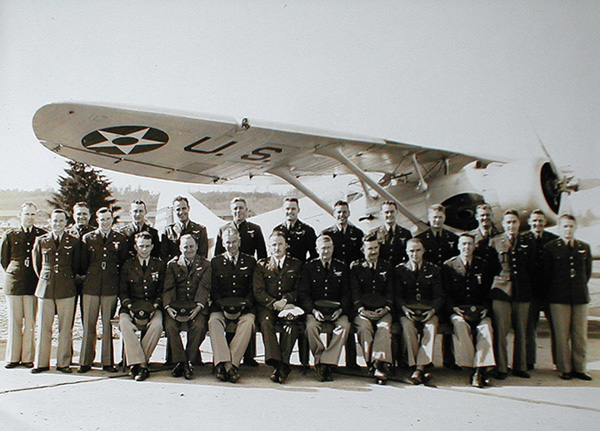
Frank - "In my last year of college, I was accepted into the Army Air Corps flight training program. At this time the country was getting serious about having to go to war and the flight training tempo was heating up. Instead of all flying cadets going to Randolph Field, they were divided among nine civilian-operated primary flying schools for their first three months of training, and my basic training was at Glendale Field in California. I survived the fifty percent wash out rate at the primary training school and went on to Randolph Field and Kelly Field for three months each, receiving my wings and commission as a second lieutenant in the Army Air Corps reserve in March of 1940."
Class 40A Flying Cadets - 1939 - Randolph Field, Texas

|
Neill D. Mullen collected information on the aviation history of Whatcom County, WA, along with newspaper clippings featuring Whatcom County residents who served in the Army Air Corp during WWII. He published this collection in his Lest We Forget - Whatcom County Avation History 1941-1945. It includes several clippings regarding Frank and his brother Buell.
Frank's first duty station was at Grey Field at Fort Lewis, where he was assigned to the 91st Observation Squadron. The mission of the squadron was to provide aerial photography and reconnaissance for the army ground force. Frank and Betty lived off base in a rental house north of Grey Field. During this time, Frank was one of seventeen Air Corps officers selected for a Regular commission in the Air Corps.
Frank - "At Grey Field at Fort Lewis, I got acquainted with a lieutenant colonel from the army ground forces who was especially interested in military aviation. His name was Dwight D. Eisenhower. He was promoted to colonel, and shortly afterward came out to Grey Field and asked if we would fly him to Fort Riley, Kansas which was near his home. A first lieutenant and I volunteered to make the flight. I remember when we landed at Lowry Field in Denver we had a generator out so Colonel Eisenhower called the president of the company which made the plane and asked if they would fly a generator for our plane. In about two hours here came a plane from Beechcraft with the needed generator. Eisenhower was a brilliant and capable officer."
After the attack on Pearl Harbor, Frank was reassigned as Base Operations Officer for McChord Field. Several months later, he received an urgent call to report to Hamilton Field, in California, where he was assigned as Base Operations Officer. In this capacity he was responsible for supervision of all base operations activities of Hamilton Field and nine other training bases in the Sacramento valley and San Francisco areas.
After about two years at Hamilton Field, Frank, who was now a major, received orders to report for B-24 pilot training. After six weeks of ground training on the B-24 at Liberal, Kansas, he was transferred to Gowen Field in Boise for combat training. Frank and his crew had finished all except the last week of combat training when "the bomb" was dropped on Japan. The war ended several days later, and most of Frank's crew members were discharged.
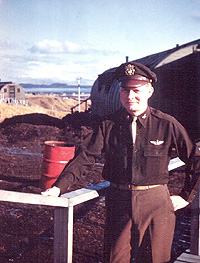
Around October 1945, Frank was assigned to Headquarters, 11th Air Force located at David Air Field on the island of Adak in the Aleutian Islands. He was appointed Inspector General for all Air Corps activities at the eleven air bases in Alaska, and conducted inspections at each base every three months. He flew his assigned C-47 for two years in some of the worst flying weather in the world.
After the first year at Adak, Betty and the two children (Linda and David) were allowed to join Frank. They traveled on an Army troop transport vessel, and the family lived in a renovated Quonset hut, which was very basic, but adequately shielded them from the heavy wind, rain and many earthquakes. On October 1, 1947 the Frank Nims family returned to Seattle on an army transport ship.

|
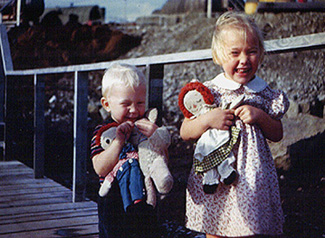
|
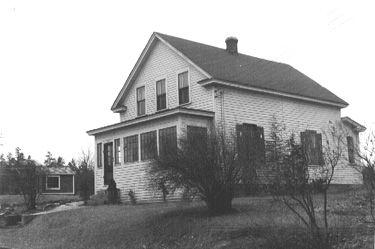
|
After 60 days leave, departed for Westover Field, Massachusetts, where Frank served for two years as inspector for the Air Transport Wing.
Next Frank served four years in charge of the Air Force ROTC at Washington State University in Pullman, where he was promoted to Lt. Colonel. While in Pullman, Frank, with the help of his uncle, Paul Nims, built a new house, where the family lived for the balance of their time in Pullman.
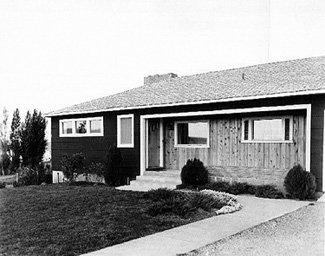
|
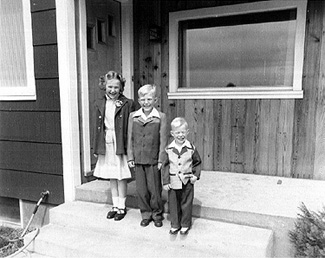
|

|
After a year of temporary duty (TDY) at Goose Bay, Labrador, Frank spent the next four years at Mountain Home AFB in Idaho.
In April 1957, the station "ALPHA" was installed on T-3 (Fletcher's Island), an island of ice 9 miles long, 5 miles wide, and 240 feet thick, that roamed through the Arctic sea ice from many years. This was the first long-term scientific base in the Arctic operated by a Western country. Frank Nims was assigned as commander of the military installation on T-3 during the International Geophysical Year (July '57 through December '58), and many scientific experiments were being operated by a contingent of scientists from many countries. During his time there, a young polar bear was shot which was hanging around the base. Frank ended up with the hide, and, upon his return to the States, had a taxidermist make a rug out of it. (Click here to find out what eventually happened to Ice Island T3.)
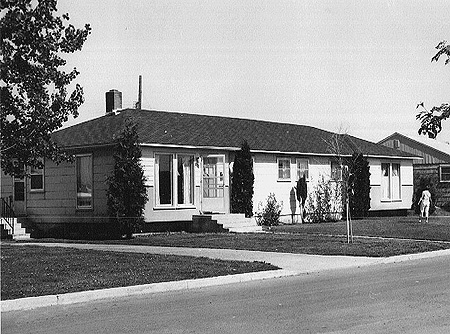
|
From there, the family moved to Fairchild AFB near Spokane where Frank served as Director of Supply for two years. Frank then retired, with 23 years of service, on August 1, 1961.